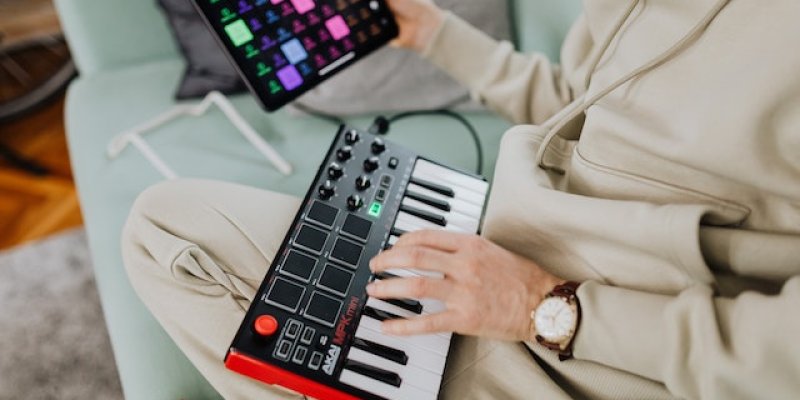
Quantization in music is the process of adjusting the timing of musical notes and rhythms to align with a specific grid or beat.
In the realm of digital music production, quantization ensures that MIDI (Musical Instrument Digital Interface) elements are perfectly synchronized, resulting in a polished and cohesive sound.
Rhythmic inconsistencies can lead to a messy performance, impacting the overall quality of the music. Timing discrepancies between different musical elements, such as drums, basslines, and melodies, can create a chaotic listening experience.
By quantizing, musicians and producers correct timing discrepancies, enhancing the overall precision of a musical performance.
This technique is especially vital in electronic music genres where tight synchronization is key to creating impactful beats and melodies.
With quantization, artists can transform raw recordings into seamless compositions, showcasing the power of technology in shaping modern music.
Quantization features are integral components of popular music production software, including Ableton Live, Logic Pro, and FL Studio.
These programs offer versatile quantization options, allowing users to adjust the timing of musical elements with ease.
Additionally, MIDI controllers, common tools in digital music production, facilitate seamless quantization. Musicians can capture performances through MIDI and then quantize the recorded data using software, ensuring precise timing.
The accessibility of quantization features in these programs empowers artists to refine their compositions and elevate their music production skills.
Related Post: 5 Ways To Make Music Without Instruments
The complexity of quantization becomes evident when musicians endeavor to align notes with precision across diverse time signatures, meters, and intricate rhythms such as swing beats and triplets.
Different programs offer unique quantization settings, allowing artists to tailor their approach based on the specific demands of the composition.
Most use a quantized strength setting that dictates the extent to which notes are adjusted to match the grid. Setting it to 100% ensures notes are precisely shifted to the nearest grid point, aligning them perfectly with the specified rhythm.
It requires a deep understanding of rhythm and the ability to interpret and preserve the unique essence of each musical piece.
Mastering this art is a testament to a musician's rhythmic skill and dedication, as they work tirelessly to ensure that every note resonates harmoniously within the composition.
So, the next time you tap your foot to a catchy tune or find yourself lost in the rhythm of a song, remember the invisible hands of quantization, orchestrating the magic!
In certain musical contexts, artists intentionally avoid quantization to preserve the human touch and emotional depth in their performances.
Genres like jazz, blues, and some forms of acoustic music benefit from the subtle variations in timing that occur naturally during live performances.
More electronic compositions like EDM, hip-hop, and pop songs that more heavily use digital instruments could also skip some quantization if they want to go for a slightly more raw sound.
By embracing these imperfections, artists create a unique listening experience, connecting with their audience on a profound emotional level.
Skipping quantization allows for a more organic, human feel in the music, emphasizing the artistry and individuality of the performers.
Related Post: Where To Find Session Drummers For Hire
Even in the absence of MIDI technology, maintaining tempo is crucial for musicians during live performances. Traditional musicians rely on their inherent sense of timing, developed through rigorous practice and experience.
Techniques such as conducting, where a conductor guides an ensemble through hand gestures and body language, help musicians stay synchronized.
Metronomes, devices that produce a regular ticking sound at a specified tempo, serve as valuable tools for practicing musicians.
Moreover, consistent rehearsals and communication within the ensemble are essential to ensuring a unified tempo.
Skilled musicians possess a finely tuned sense of rhythm, enabling them to intuitively adapt to tempo changes during live performances.
Understanding Time Signatures: Familiarize yourself with different time signatures like 4/4, 3/4, and 6/8. Each signature has a unique feel, and knowing them well will help you quantize accurately to the intended rhythm.
Experiment with Quantize Strength: Don’t always stick to 100% quantize strength. Sometimes, a slightly looser quantization (around 70-80%) can retain the natural groove of the performance while tidying up the timing.
Humanize Your MIDI: Most music software allows for a "humanize" function. Use it to introduce subtle variations in velocity, timing, and note lengths, mimicking the imperfections of live performances.
Use Quantization Presets: Many software programs offer quantization presets tailored for specific genres. Experiment with these presets to find a starting point that suits your style, and then adjust as needed.
Quantize Grooves, Not Just Notes: Some software allows you to quantize not only individual notes but also entire grooves or rhythms. This feature can be particularly useful when working with drum patterns or loops.
Practice with Swing and Triplets: Mastering the quantization of swing beats and triplets is crucial, especially in genres like jazz, funk, and hip-hop. Practice quantizing various swing and triplet patterns to develop your skills.
Live Performance Considerations: If you're preparing for a live performance, practice playing along with quantized tracks. This helps you get accustomed to the timing and ensures a seamless integration of live instruments with quantized elements.
Manual Adjustments: Don't rely solely on automatic quantization. Manually adjust individual notes that need fine-tuning. Trust your ears and musical intuition to decide what sounds best.
Quantize MIDI Controllers: If you're recording MIDI data from controllers like keyboards or drum pads, quantize them in real-time. Most software allows for automatic quantization during recording, ensuring your performances align with the grid.
Related Post: 11 Rhythm Exercises You Can Do To Feel The Beat

As a session singer, writer, and producer that has worked with over 300 clients to provide high-quality jingles, singles, and features, Yona spends her time creating and marketing new music and helpful resources for creators. Check out Yona’s latest releases on her Spotify, her Youtube and share if you like it!
If you are in need of singer, songwriter or song producer services, see what Yona Marie can offer you on her services page.